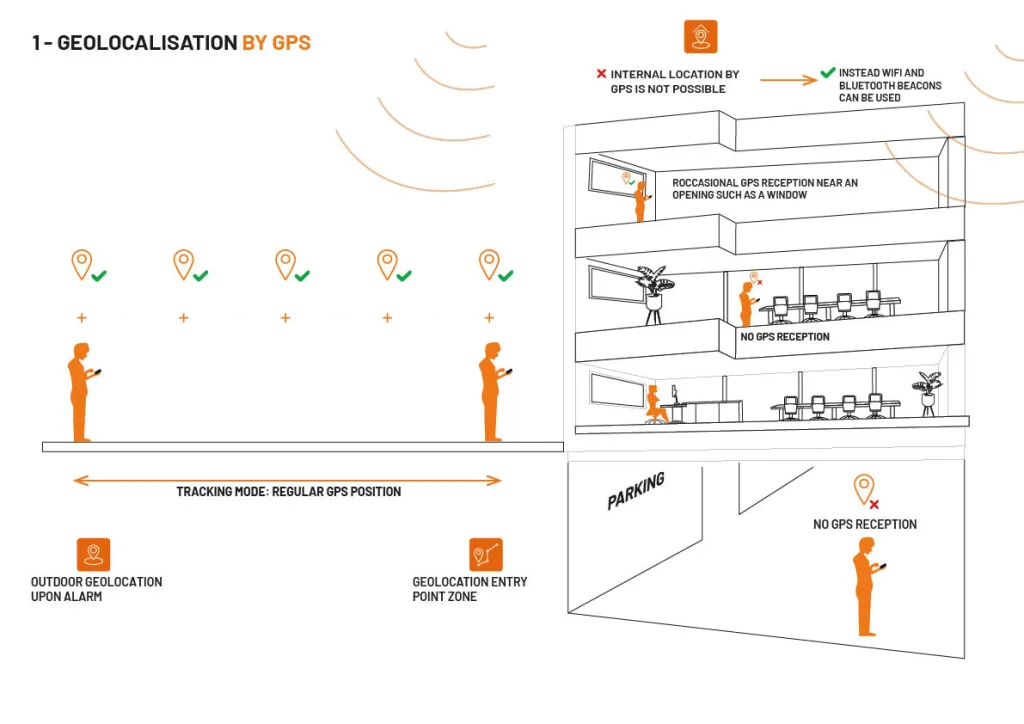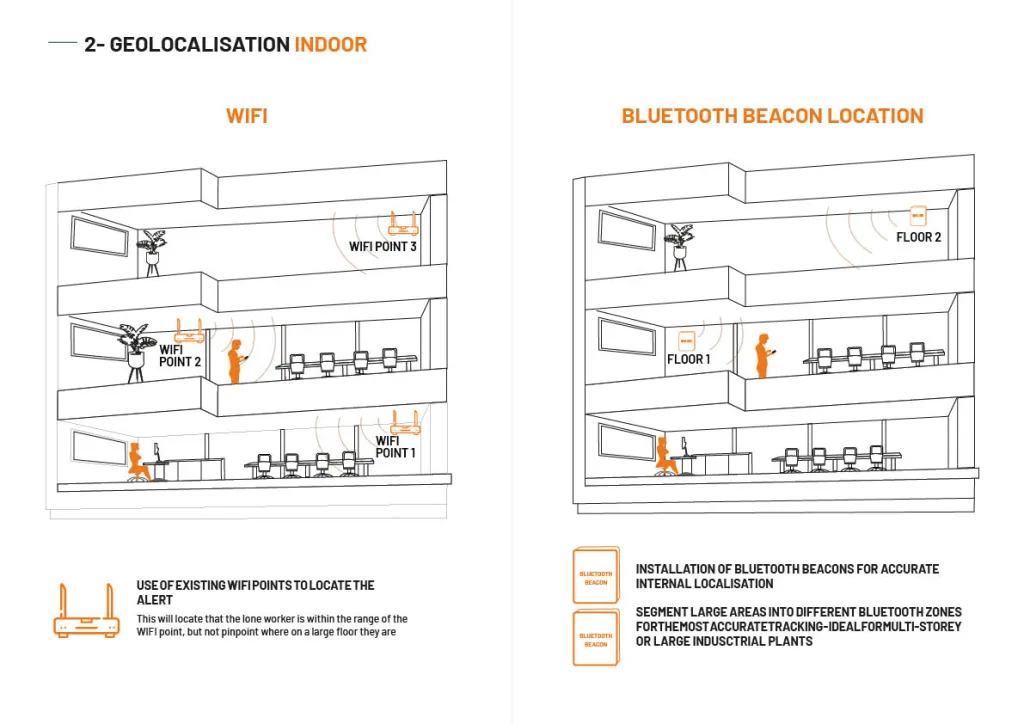Home > Knowledge Hub > Blog
Why Geolocation is Crucial for Lone Worker Safety
And How Indoor Location Beacons Can Save Lives
In many sectors – from manufacturing and warehousing to healthcare, social care, and utilities – working alone is part of the job. But when an emergency arises, the ability to locate a lone worker quickly can be the difference between a close call and a catastrophe.
Geolocation has become one of the most critical technologies for lone worker protection. By pinpointing the exact or approximate location of an employee, safety teams can respond faster and more effectively when something goes wrong. But while GPS works well outdoors, it often fails indoors – leaving large facilities, warehouses or multi-storey buildings as blind spots. That’s where Indoor Location Beacons come in.
What is geolocation in lone worker safety?
Geolocation refers to the ability to determine the physical location of a person via their device. In the context of lone worker safety, this allows monitoring centres or designated colleagues to see where a worker is at any given time – particularly important if they’ve triggered an alert, failed to check in, or their device detects a fall or sudden impact.
At Lone Worker Safety, our connected safety devices use GPS, Wi-Fi, and mobile networks to track location outdoors.
These devices are discreet, simple to use and packed with features like panic buttons, man down detection and two-way audio. But what about indoors?
The problem with GPS indoors
GPS relies on satellite signals, which can’t always penetrate thick walls, underground structures or large commercial buildings. As a result, it’s often inaccurate or completely unavailable inside warehouses, hospitals, care homes, factories or retail centres.
This creates a serious issue: if a lone worker presses the SOS button or suffers a fall indoors, and their device can’t get a GPS signal, how will you know where to send help?
The solution: Indoor Location Beacons
Indoor Location Beacons bridge the gap left by GPS. These small, wireless Bluetooth beacons are strategically installed around your indoor space – zoned to match key areas like storerooms, loading bays, treatment rooms, or stairwells.
When a lone worker enters a zone, their safety device or companion app picks up the beacon’s signal. If an alert is triggered, the beacon data is instantly transmitted to your monitoring platform, showing precisely where the worker is located.
Key benefits of Indoor Location Beacons:
- Faster response times: First responders or security teams aren’t wasting precious minutes searching an entire building – they know exactly which zone to go to.
- Greater accuracy: Especially in complex indoor environments where GPS fails, beacons can give you room-level precision.
- Targeted first aid alerts: Nearby First Aiders can be notified instantly via the app if they’re in the vicinity, so someone can be on the scene within seconds.
How it works in practice
Let’s say a warehouse employee working in a picking area collapses due to a medical issue.
Their lone worker device detects the fall and triggers an alarm. The Indoor Location Beacon in that zone identifies their precise location and this data is sent in real-time to the monitoring centre or on-site response team.
At the same time, the system can alert the closest trained First Aider, enabling an almost immediate response.
That’s the power of combining smart technology with proactive planning.


Why choose Lone Worker Safety UK
At Almas Industries, we take lone worker safety seriously. We don’t just sell devices – we design tailored solutions to suit your environment and your workforce.
From GPS-enabled safety devices and discreet wearable alarms to indoor location beacons and 24/7 monitoring, we help you protect your team wherever they are – indoors or out. Our systems are fully compliant, easy to use, and trusted by thousands of businesses across the UK and Ireland.
Whether your lone workers are delivering care in private homes, maintaining plant equipment across a vast site, or operating machinery alone at night – we’ll make sure they’re never truly alone.
Almas Industries: Your Partner in Lone Worker Safety
At Almas Industries, we specialise in providing tailored solutions to protect lone working across the UK. Our range of products includes:
- Safety Watch: Wearable devices that offer real-time monitoring and emergency alerts.
- Lone Worker App+: A mobile application designed to keep lone workers connected and safe.
- 24/7 Monitoring Services: Our Alarm Receiving Centre (ARC) ensures immediate response to any alerts or emergencies.
With our expertise and commitment to safety, we help businesses comply with legal requirements and, more importantly, protect their most valuable asset, their employees.
Don’t wait until it’s too late. Ensure the safety of your lone workers today with Almas Industries and get in touch today!

Social Media
For all the latest Lone Worker news from Almas Industries follow our social media!
We're Serious About Lone Worker Safety
Our goal is to understand your lone workers unique needs and deliver bespoke solutions that are effective and keep you compliant with Health and Safety legislation.
Protect Your Lone Workers Now
Get advice on the solution that aligns with your operational structure, geographical spread of lone workers, and your operational hours.

Contact us today to work with a leader in UK Lone Worker Protection.



